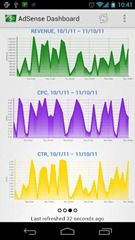We all know minimising our JavaScript files prior to moving a site into a production environment is best practise. The main reason why we do it is because compressed JavaScript files allow sites run faster at a lower bandwidth cost and (to some extent) make the code harder to understand.
But what if we wanted to have the ability to render a JavaScript file completely unintelligible to prying eyes? This is the very question I asked myself prior to deploying a site I worked on to a live environment.
Even though standard JavaScript minimisers remove comments, white space and use shorter variable names, we can take things a step further.
I found a great site that manages to render your code into complete jibberish. You can give it a go by going to: http://javascriptobfuscator.com/.
NOTE: Just as JavaScript code can be easily minimised, it can just as easily be “beautified” by going to: http://jsbeautifier.org/. Nevertheless, using the link above is a better deterrent when compared to other minimisers in my opinion.




 Apologies for making a reference from the social-satire/sci-fi film that is RoboCop (1987) in my post title. It just had to be done when talking about some tool called RoboCopy. For those who aren’t aware of what RoboCopy is, where have you been? In all honesty, I myself never heard of it until a few days ago.
Apologies for making a reference from the social-satire/sci-fi film that is RoboCop (1987) in my post title. It just had to be done when talking about some tool called RoboCopy. For those who aren’t aware of what RoboCopy is, where have you been? In all honesty, I myself never heard of it until a few days ago. After blogging under the “computing-studio.com” domain name for around 4 years, I think its time for a new chapter in my online presence. Last Friday I decided to buy a new domain name called
After blogging under the “computing-studio.com” domain name for around 4 years, I think its time for a new chapter in my online presence. Last Friday I decided to buy a new domain name called 


